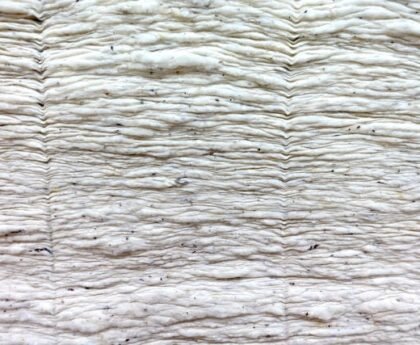Disposable food packaging like trays, cutlery and wrappers are part of our everyday lives, but have you ever thought about what happens when you’re done with them? When packaging is disposed of, it can have an impact on the environment, particularly the ocean and marine life. Because of this, food manufacturers are making changes for the better; including introducing eco-friendly disposable cutlery, and reusable and biodegradable materials. Below, we’ll take a closer look at how disposable food packaging materials can harm the environment; including the ocean and the creatures that call it home.
Pollution
Whilst disposable food packaging is used by many of us each day; it creates pollution, which as a result can impact our oceans. This type of packaging disposable and cannot reused once it’s done its job; – but the problem with this that if it’s not disposed of correctly; it makes its way back into the environment in the form of litter. Litter can cause a huge issue for animals and their habitats; not to mention the fact that it also ruins the surroundings of where we live.
Litter can end up on beaches, or in rivers and other bodies of water, eventually flowing into the ocean. When this pollution finds its way into the ocean; it then becomes dangerous to animals, like fish, sea birds and turtles. The creatures living in the sea can ingest this litter or get tangled up in it, which can kill them. The only way that humans can put a stop to this is to cut back on using disposable food packaging; and wrapping or choose a recyclable alternative.
Plastic waste
Many of us will be aware that we need to cut down on plastic; – but how much do you really know about the issues plastic causes? From the moment plastic products produced; they cause an issue for the environment as the manufacturing process produces a huge amount of toxic greenhouse gas. When it’s used to make disposable packaging, and it’s not disposed of correctly; it then becomes waste. Plastic litter is a huge part of the problem.
Plastic is not biodegradable, which means it doesn’t break down back into the earth. Instead, it breaks into microplastics that can enter the food chain and harm both animals and fish. It can also harm the quality of the soil in the environment; as plastic particles seep into the area the product has been discarded. Not only can microplastics harm animals and their habitats, but they can also pose a problem for human health too.
Destruction of habitat
Disposable plastic food packaging can destroy the environment and affect the lives of a range of plants, animals, and organisms. When disposable food packaging ends up on the beach, in rivers, or in the sea; the animals that live there automatically put at risk. This could from plastic breaking down into the water and consumed by fish; packaging could eaten by seabirds, or cause animals to become entangled in it. This could then have a knock-on effect on the food chain.
How can we make changes?
The evidence is clear when it comes to using different, more sustainable materials for disposable food packaging. And thankfully, as the effect we’re having on the planet becomes more obvious; food manufacturers are finding alternative solutions to help solve the environmental issues that come with disposable packaging. Materials like glass jars and bottles, paper and cardboard packaging;, biodegradable materials made from corn starch and sugarcane and cloth and mesh bags are all becoming popular choices. As well as this, manufacturers are also favouring reusable products; like bottles that can be refilled to reduce waste and plastic production. By doing this, we can reduce the impact disposable packaging has on the ocean and the organisms that live there.




